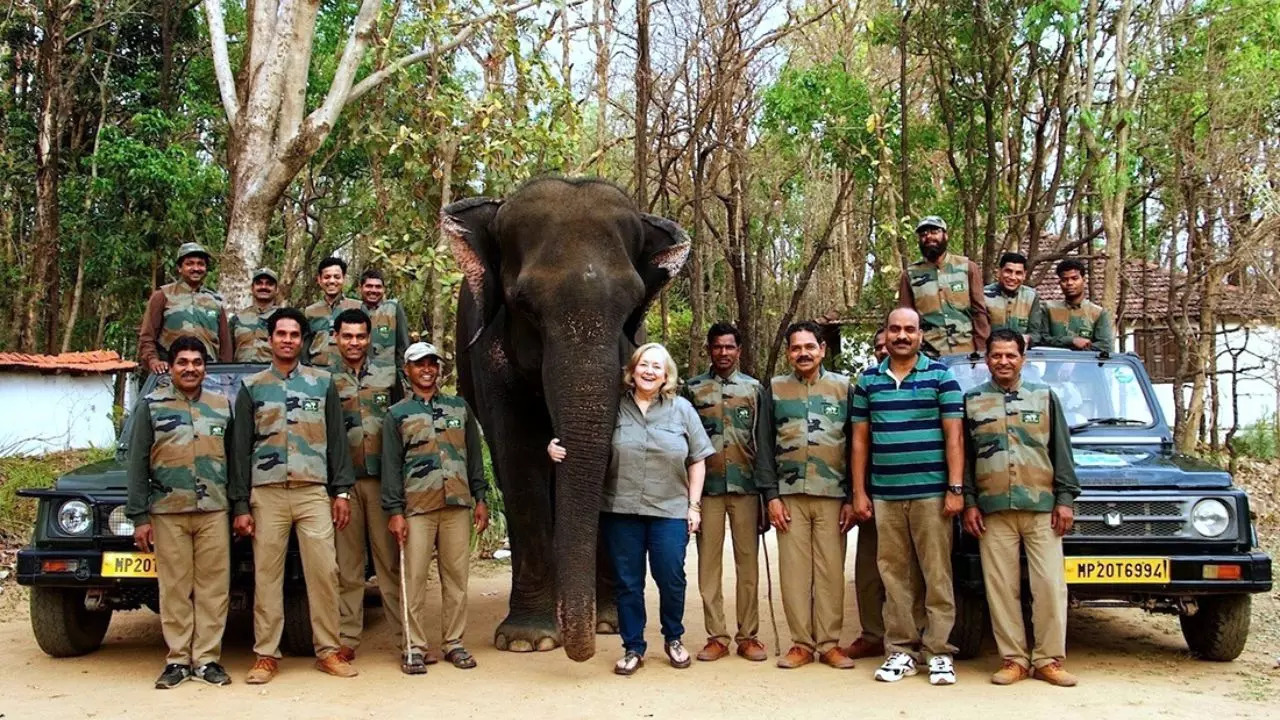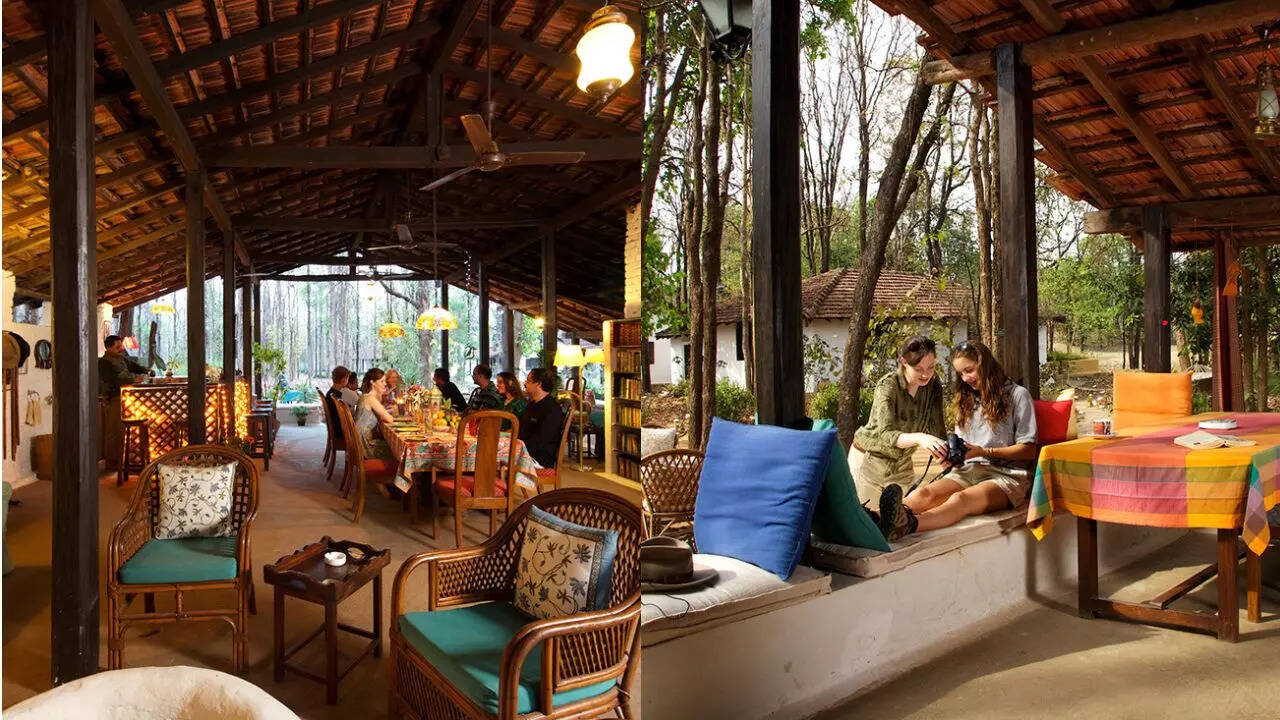International Tiger Day: How Belinda Wright wrote a new story for conservation in India
With a deep passion for the natural world, Wright has not only worked for the welfare of tigers but has also pioneered a unique model of eco-tourism through Kipling Camp. In his words: During the day the camp is yours, but at night it belongs to the wildlife

How Belinda Wright forged a new narrative for conservation in India
In the history of Indian wildlife conservation, few names deserve as much respect and admiration as Belinda WrightFounder of the Wildlife Protection Society of India (WPSI), her life has been a tireless effort to protect the country’s most iconic species: the tiger. Before devoting herself full-time to conservation in 1994, Belinda Wright was a renowned wildlife photographer and Emmy-winning filmmaker for National Geographic. Since then she has become a leading authority on wildlife crime, exposing the illegal trade in tiger parts and leading to the arrests of numerous criminals.

Wright’s journey began amid the lush forests of India, where her immense love for nature ignited her passion for conservation. Decades later, she stands as a formidable force, her determination as sharp as the claws of the big cats she protects.
“My family was one of the first to give up any kind of shooting and we spent all our family holidays in the jungle, staying in various forest bungalows or at our camp in Palamu, Bihar. There wasn’t much wildlife to see – only at night could you catch a glimpse of a herd of elephants and occasionally get a look in the eyes of a big cat. But it was still exciting! There were old forts to visit, rivers and ponds to swim in, and wonderful places to take long walks through the forest and villages,” she recalls of a time when tiger conservation was in its infancy in India.

When asked about the factors contributing to the increase in tiger population in India, he said, “Tiger poaching has reduced dramatically due to better enforcement led by intelligence and improved security in the field (including the use of sniffer dogs), better monitoring of tiger movements (including the use of camera traps) and focused training of ground staff.” Though the numbers are encouraging, the challenges remain daunting.
Wright acknowledged that “loss of tiger habitat, human-tiger conflict, poaching of prey species and the illegal trade of tiger body parts remain major concerns.” Her voice clearly reflects the complexities of balancing human needs and wildlife conservation. Yet, amid these challenges, stories of hope emerge. “Many tribal communities believe they have always shared the forest with tigers,” Wright said, highlighting the possibility of peaceful coexistence. However, she emphasizes the urgent need for more habitat for tigers. “Increasing tiger numbers often leads to human-tiger conflict. We need more space for them.”

Wright’s commitment to conservation extends far beyond his advocacy role. Kipling Camp, a family-run lodge in the Kanha Tiger Reserve, is a testament to his belief in sustainable tourism. “I first visited Kanha in 1972 – there were lots of signs of tigers and even a brief daytime sighting, and I absolutely fell in love with the place! I went back in 1973, and visited Bandhavgarh (where there was no sign of tigers!), and finally came to Kanha for a longer stay in the summer of 1974, to photograph tigers for National Geographic. A week into my stay, I realised that Kanha was my spiritual home, and I sat down to write a letter – it was one of those folding, prepaid ‘lettergrams’ – to my parents, “It’s time we give back to the forests we love, and they can do that by taking money from visitors here, sharing our knowledge and experiences and making them aware of the urgent need to protect wildlife, and last but not least, we should spend the profits on helping the extremely poor villages in the region… To my surprise, after long discussions and planning, they decided to do exactly that, and thus the idea of Kipling Camp came into being,” she says with a twinkle in her voice.

Today, the camp not only offers guests a unique opportunity to experience the wilderness, but also serves as a platform to educate about tiger conservation. “Kanha Falls falls in a grey area for water, so we use traditional drip-wells rather than water borings, we practice water harvesting and we have no swimming pool or formal garden. All our staff is locally employed, and we use locally bought supplies wherever possible. There are no TVs, loud music or noise late into the night, and we try to be as sustainable and one with nature as possible. The first thing we tell our guests is that during the day the camp is theirs, but at night it belongs to the wildlife,” she says. One of the Wildlife Protection Society of India’s tiger conservation awareness and anti-poaching teams is also based at Kipling Camp, and they help sponsor 11 tribal children at the local school.

When the world is celebrating World Tiger DayWright’s message is clear: “The camp and the Kanha Tiger Reserve are closed for the monsoon, but once it opens, it’s world Tiger Day Every day.” Her legacy is not just about protecting tigers, but about inspiring a generation of conservationists and promoting a harmonious relationship between humans and wildlife. Belinda Wright is more than a conservationist; she is a symbol of hope, a tigress in her own right, fighting tirelessly for the survival of India’s most magnificent predator.
Also read: Exclusive: This 28-year-old wildlife photographer supports conservation efforts while capturing luxury wildlife
End of article


